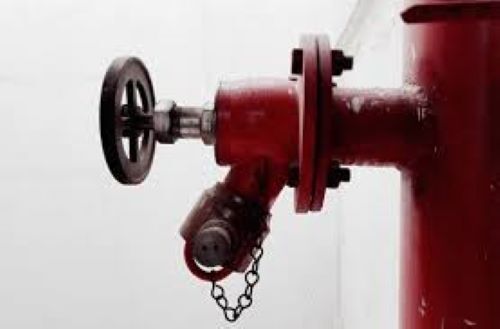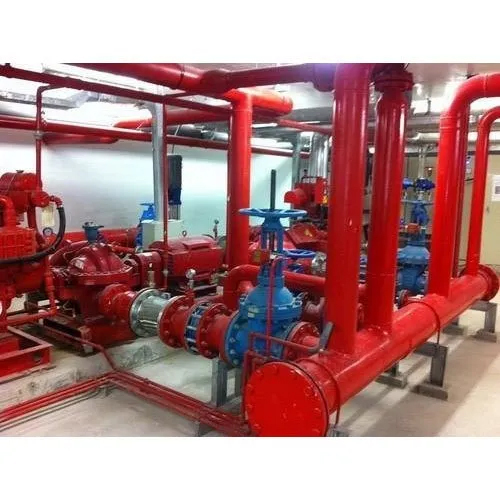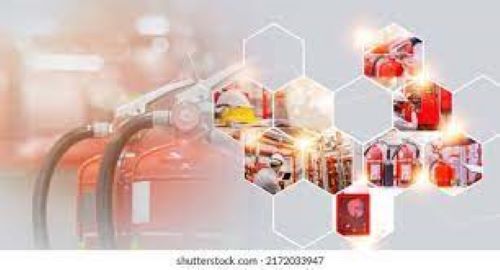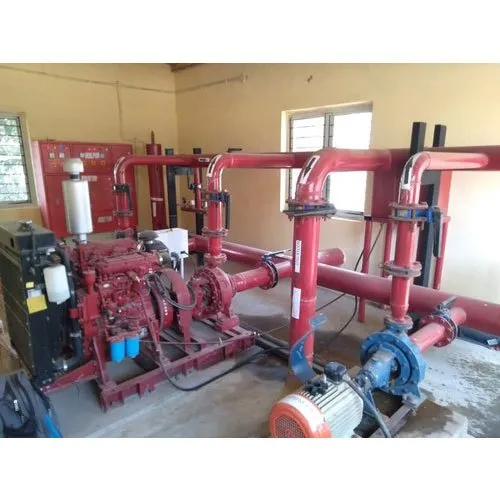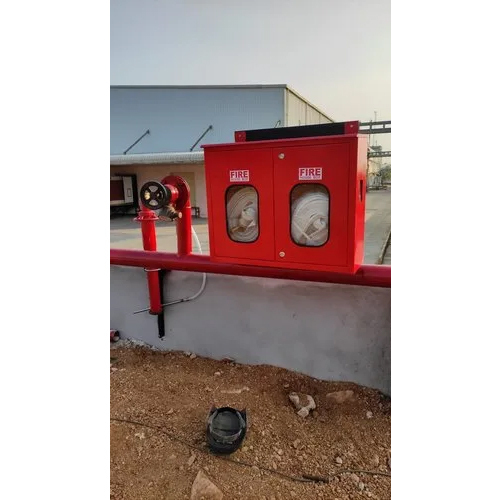Fire Hydrant System
Product Details:
Fire Hydrant System Price And Quantity
- 25000 INR/Square Meter
- 10 Square Meter
Fire Hydrant System Trade Information
- Andhra Pradesh, Telangana
Product Description
A fire sprinkler system is a crucial component of fire protection systems installed in buildings to detect, control, and extinguish fires automatically. Here are key features and considerations related to fire sprinkler systems:
Detection and Activation: Fire sprinkler systems are typically activated by heat, triggered when the temperature at the sprinkler head rises to a specific threshold. This heat-sensitive element, known as a fusible link or bulb, ruptures or melts, releasing water onto the fire below.
Types of Sprinkler Systems
- There are several types of fire sprinkler systems, including:
- Wet Pipe Systems: These systems have pipes filled with pressurized water ready to discharge immediately upon activation.
- Dry Pipe Systems: These systems use pressurized air or nitrogen to keep the pipes dry until a sprinkler head activates, at which point water is released.
- Pre-action Systems: Similar to dry pipe systems, but water is held back by an electronically operated valve until a detection system (such as smoke or heat detectors) detects a fire.
- Deluge Systems: These systems release a large volume of water simultaneously from all sprinkler heads when triggered, typically used in high-hazard areas.
- Foam Water Sprinkler Systems: These systems discharge a mixture of water and foam concentrate to extinguish flammable liquid fires.
- Water Mist Systems: These systems use fine water droplets to cool and suppress fires, often used in areas where water damage needs to be minimized.
Sprinkler Head Design: Sprinkler heads come in various designs, including upright, pendant, sidewall, and concealed types. Each design is suitable for different installation locations and ceiling configurations.
Coverage and Spacing: Sprinkler heads are strategically spaced to ensure adequate coverage and distribution of water throughout the protected area. The spacing and layout of sprinkler heads depend on factors such as building occupancy, hazard classification, and hydraulic calculations.
Water Supply: Fire sprinkler systems require a reliable water supply, typically provided by municipal water mains, onsite water storage tanks, or fire pumps. Adequate water pressure and flow rates are critical for the effective operation of the system.
Alarm and Monitoring: Fire sprinkler systems may be equipped with alarm devices to alert occupants and emergency responders when the system activates. Additionally, monitoring devices may be installed to provide remote monitoring and notification of system status and events.
Maintenance and Inspections: Regular maintenance and inspections are essential to ensure the reliability and effectiveness of fire sprinkler systems. This includes checking for leaks, corrosion, obstructions, and proper functioning of alarm devices and control valves.
Code Compliance: Fire sprinkler systems must comply with local building codes, fire safety regulations, and industry standards such as the National Fire Protection Association (NFPA) codes and standards (e.g., NFPA 13 for sprinkler system installation).
Benefits: Fire sprinkler systems provide early fire detection and suppression, helping to prevent the spread of fire and limit property damage, injuries, and loss of life. They are often required by building codes and insurance providers to enhance fire safety in commercial, residential, and industrial buildings.
Integration with Fire Alarm Systems: Fire sprinkler systems may be integrated with fire alarm systems, smoke detection systems, and building automation systems to provide comprehensive fire protection and emergency response capabilities.
Overall, fire sprinkler systems are essential life safety systems designed to protect people, property, and assets from the devastating effects of fire. By detecting and suppressing fires in their early stages, sprinkler systems play a critical role in mitigating fire-related risks and promoting occupant safety in buildings of all types and sizes.

Price:
- 50
- 100
- 200
- 250
- 500
- 1000+

